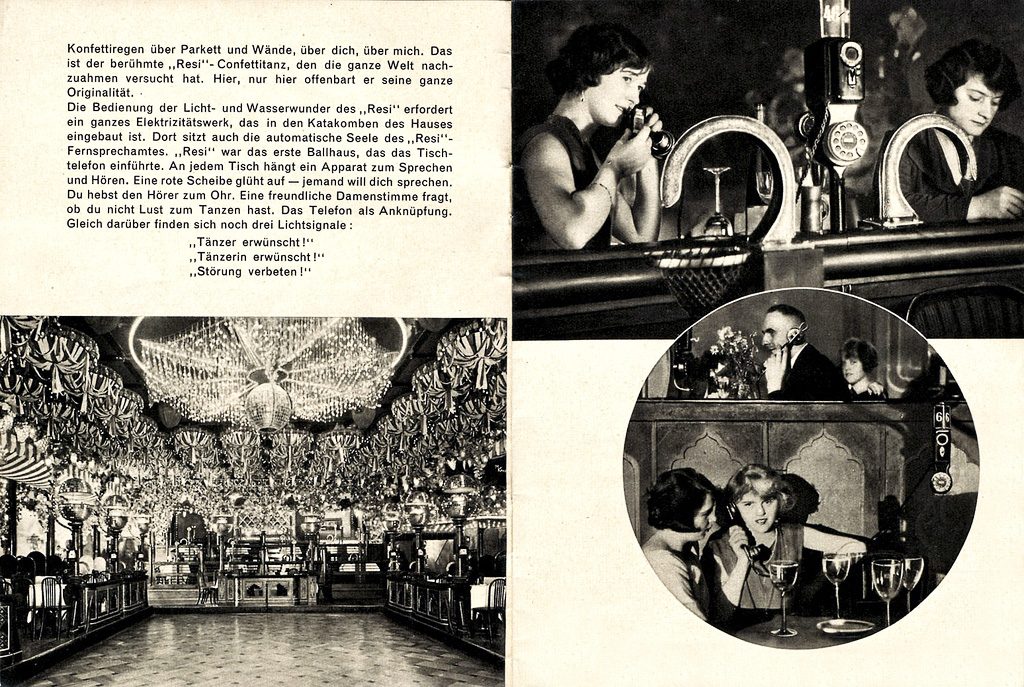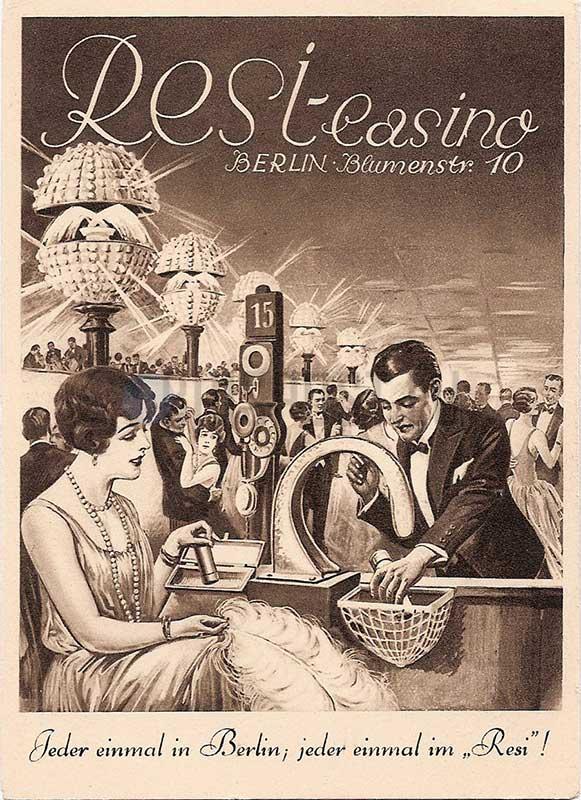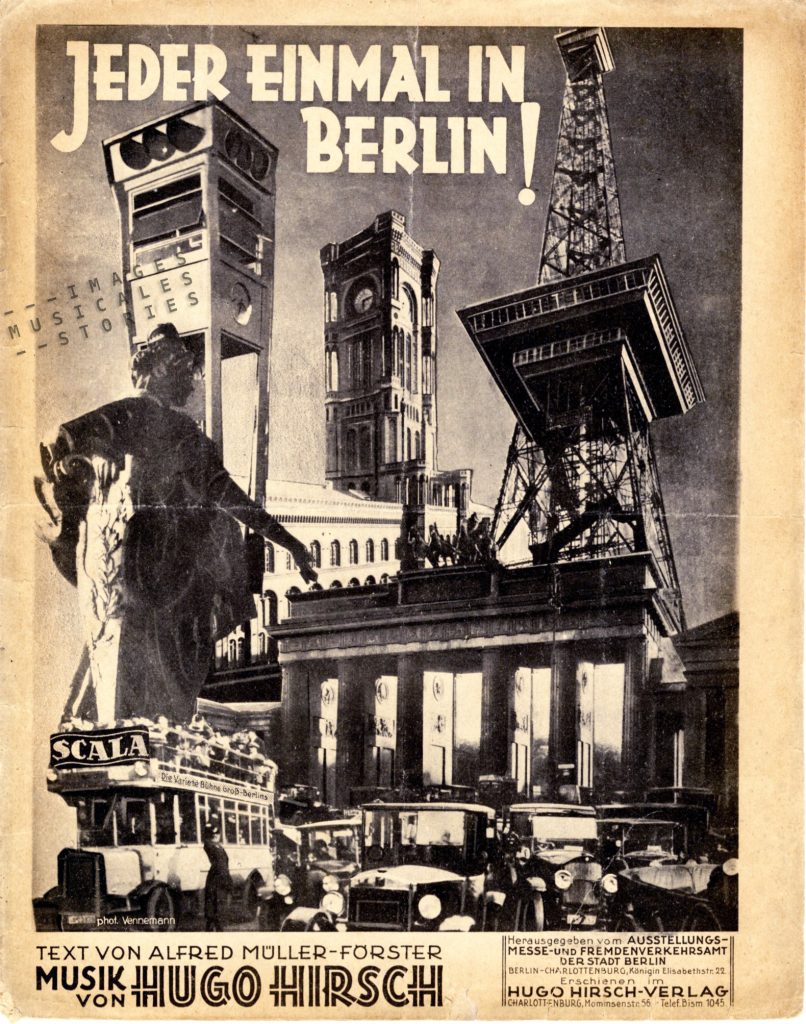
This photo collage by Albert Vennemann conveys the buzz of a dynamic, modern city. We recognise the famous light traffic tower from Potzdammer Platz, the Brandenburg Gate, the Rotes Rathaus, the radio tower, the ubiquitous cars and a bus with an advertisement for the Scala, a very successful variety hall internationally reputed during the Golden Twenties.
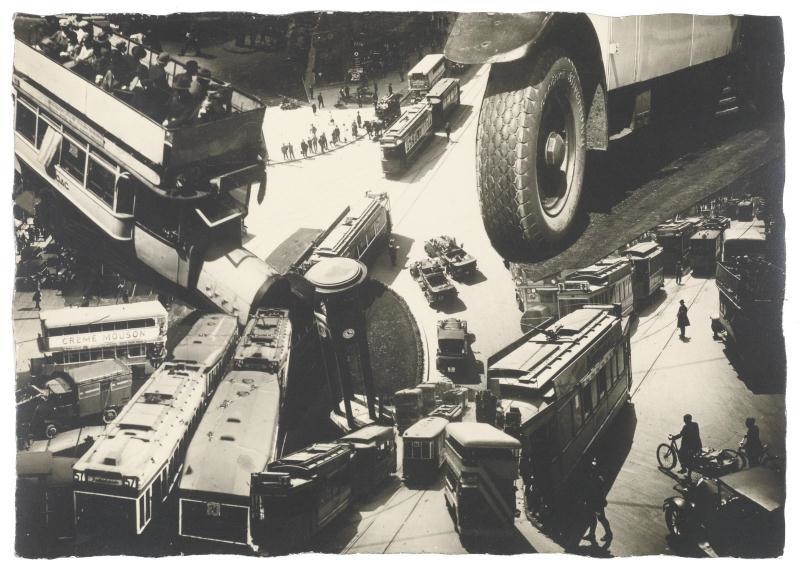
Vennemann was a Berlin photographer, who is now almost forgotten. He made pictures of everyday street life, capturing the idyll of the city and the (new) charms of illuminated advertising. He became an expert at photomontages of contemporary architecture and technology. Thus, Vennemann provided the visuals for the first Berlin city marketing campaign Jeder einmal in Berlin, meaning everybody should be at least once in Berlin.
It is also thanks to another artist, Walter Ruthmann, that we can witness the industrial, technical and cultural modernity that emanated from Berlin at that time He created his avant-garde film Berlin: Die Sinfonie der Großstadt (Berlin: Symphony of a Great City) in 1927. It is an invaluable time capsule of a Berlin that —fifteen years and 350 air raids later— would be dramatically destroyed.
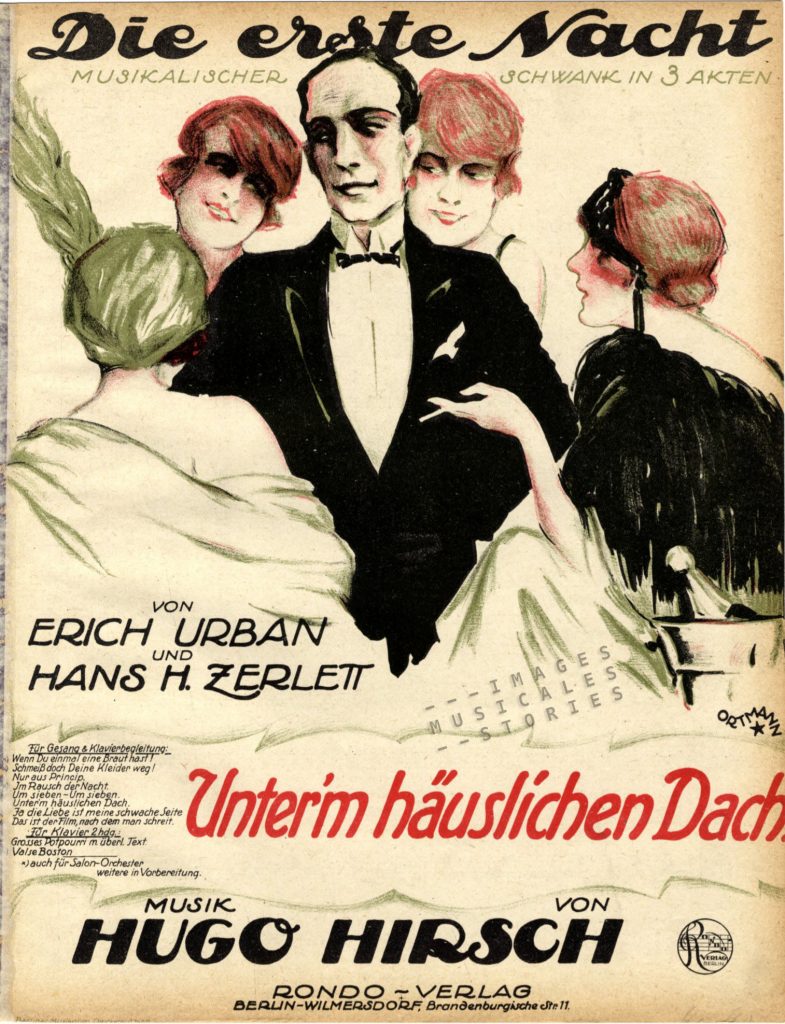
The popular march for the Jeder einmal in Berlin campaign was composed by Hugo Hirsch, a composer of well-received operettas. He left Germany in 1933 to escape Nazi anti-Semitism, and was able to survive the war by staying in France.
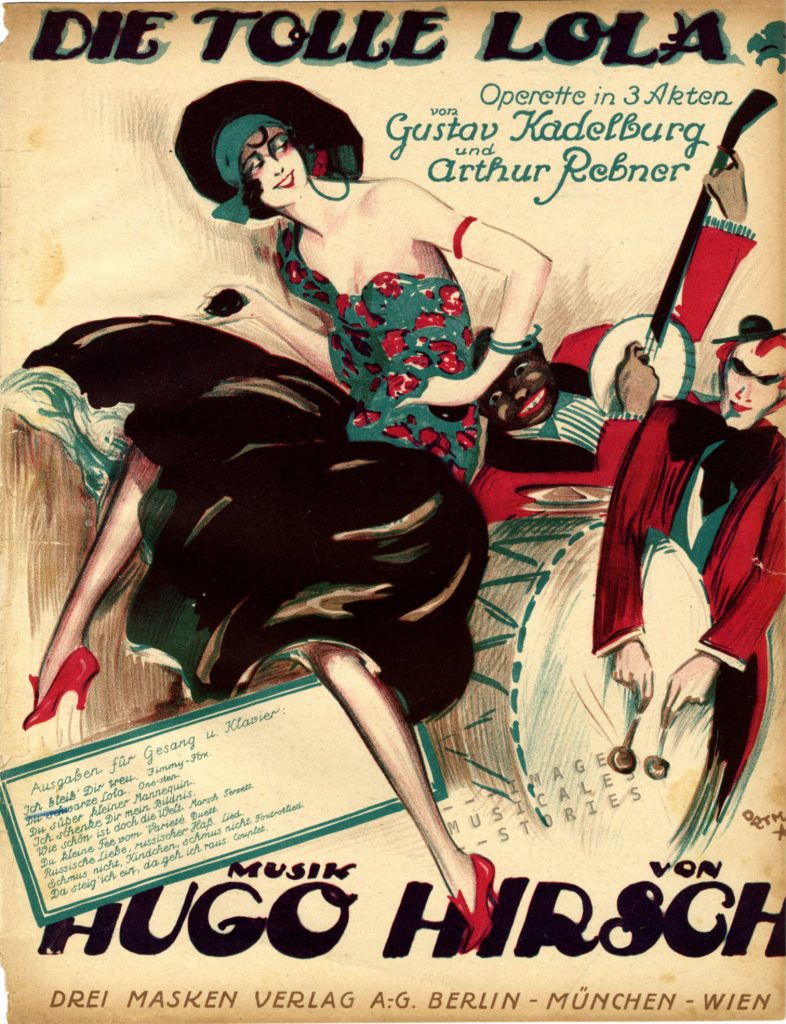
We wonder if Hirsch’s march could have lured you you to Berlin…
The promotional slogan Jeder einmal in Berlin was picked up by the Residenz-Casino, nicknamed the Resi: Jeder einmal im “Resi“!
The Resi was a vast dance-hall where everything seemed bigger and more luxurious than in any other dance venue. Each table had a connection to a pneumatic table-mail-service post. Using the pneumatic post, a patron could send intimate messages to revellers at other tables along with small presents: cigarettes, cigars, chocolates, pens, perfume, matches or tiny manicure pouches. There was a long list of gift items to choose from. Moreover, each table had its own telephone with a clearly visible table number on top. Above it was a lightbulb that could give one of three signals: dancer wanted, female dancer wanted or do not disturb. This technology must have given plenty of opportunities for romantic thrills and flirts with complete strangers. Everybody —at least once!— at the “Resi“.
